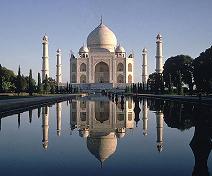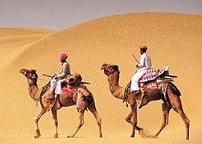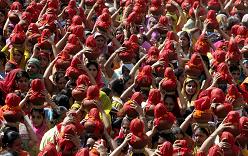|
|
|
|
|
|
|
|

|
INDIA IS THE WORLD'S MOST POPULOUS
democracy and the seventh largest country by geographical land mass,India
shares its borders with China, Nepal, Bhutan,Bangladesh, Myanmar and
Pakistan.It has a long history and diverse culture and it has spawned many
philosophies, great thinkers and influential martial artists.
INDIA IS OFTEN CONSIDERED THE
BIRTHPLACE OF MARTIAL ARTS
and although this may not be 100% accurate, it could be said
that the existence of many of today's martial arts is due to the actions of
the famous Indian monk
Bodhidharma
who was also known as 'Da Mo' in China,
he is named 'Pu Tai Ta Mo'
in Sanskrit and 'Daruma Daishi' in Japanese. In the Buddhist world he is
known as the 28th Patriarch of Indian Buddhism or the First Patriarch of the
Chinese Zen Lineage. |
 |
BODHIDHARMA
(菩提達摩 - Chinese) (達磨- Daruma - Japanese) (बोधिधर्म -
Sanskrit)
Born around 400 CE in Kanchi (the capital of the southern Indian kingdom of
Pallava) into the warrior caste. Bodhidharma received Buddhist teachings, by
a Buddhist teacher named Prajnatara, from a young age and was also said to
be proficient in
Kalarippayattu, an empty-hand weapons based form of Indian martial
arts.On his deathbed, Prajnatara asked Bodhidharma to go to China to re-awaken the followers of
Buddha. Some sources say that almost five percent of the population were
Buddhist Monks even before the arrival of Bodhidharma. Legends vary in the
method of his arrival, some say he traversed the Himalayan Mountains, others
say he rode a ship around the coast. Regardless, he arrived around 526 A.D.
Upon arriving in China,
the Emperor Wu Ti, a Buddhist himself, requested a meeting with
Bodhidharma. The Emperor asked him what reward he had received for all of
his good works. Bodhidharma answered that he had accrued none. Bodhidharma
was unable to convince Wu Ti of the value of the new teachings he brought
from India.
Frustrated,Bodhidharma set out on a northerly direction. He crossed the Tse River,
and climbed Bear's Ear Mountain in the Sung Mountain range to where the
Shaolin Temple was located. It had been founded forty years before by
Buddhist monks and was famous for its translations of the Buddhist
scriptures into Chinese. Bodhidharma sought entrance into the Shaolin
temple.
When Bodhidharma arrived at the Shaolin temple in Song Shan in Henan
province, he was initially refused entry. According to legend, he went off
to meditate in a cave close to the temple for nine years, not speaking for
the entire time. The monks ,realizing Bodhidharma's dedication and wisdom,
eventually allowed him to enter the temple. |
|
Bodhidharma was appalled to find the
monks fat, and without the ability to even stay awake during his lectures.
In addition, the monks were unarmed and easy pray to bandits when they
attempted to go out into the world to teach. So they decided to stay in the
safety of the monastery. This explained one reason that Buddhism was no
longer as widespread as it had been.While he was there he taught a
number of Zen principles and yogic martial-art exercises to strengthen the
weak and sickly monks who, after years of static meditation , lacked
physical strength and vigour.When in China he started what
became known as the Zen school of Buddhism.
Bodhidharma created an
exercise program for the monks which involved physical techniques that
were efficient, strengthened the body, and eventually, could be used
practically in self-defense. When Bodhidharma instituted these practices,
his primary concern was to make the monks physically strong enough to
withstand both their isolated lifestyle and the deceptively demanding
training that meditation requires. It turned out that the techniques
served a dual purpose as a very efficient fighting system, which evolved
into a marital arts style.
His system
involved dynamic tension exercises. These movements found their way into
print as early as 550 A.D. as the Yi Gin Ching, or Changing Muscle/Tendon
Classic. We know this system today as the Lohan (Priest-Scholar) 18 Hand
Movements, which serves as the basis of Chinese Temple Boxing and the
Shaolin Arts. Many of the basic moves of both
Tai Chi Chuan and
Kung Fu
can be seen in the scenes recorded on the walls of the temple.
These skills
helped the monks to defend themselves against invading warlords and
bandits. Bodhidharma taught that martial arts should be used for
self-defense, and never to hurt or injure needlessly. In fact, it is one
of the oldest Shaolin axioms that "one who engages in combat has already
lost the battle." Bodhidharma also taught medicine to the monks and
arranged for Chinese doctors to come to share their knowledge with the
Shaolin. In three years the monks became so skilled in both the martial
arts and medicine that they start to be feared and respected by the
bandits. This went a long way toward continuing the spread of Buddhism and
Zen thoughout China and the rest of Asia.
Even the death of
Bodhidharma is shrouded in mystery. Legend has it that he was poisoned by
one of his followers disappointed at not being selected as the successor.
Regardless of the reason, Bodhidharma died in 539 A.D. at the Shaolin
Temple at age 57. They laid him to rest in a tomb there.
The strangest
legend regarding Bodhidharma is that three years later he was met on the
road by a government official, walking out of China towards the Himalayas
with his staff in his hand and one of his sandals hanging from it. Having
dined with Bodhidharma on many occasions, the official was certain it was
him. When the official arrived at the monastery and recounted his
experience, the monks opened the tomb only to find it contain just a
single sandal.
The forms created
and taught to these monks are generally believed to be the root of the
martial arts in China. While there is evidence that portions of these
movements existed prior to the arrival of Bodhidharma, he was the one who
codified and recorded them and from there they have gone to spread
throughout the world.
Bodhidharma was later credited, somewhat contentiously, with writing the Chinese classics Yi Jin Jing and Xi Sui Jing. These books were effectively the first “qi-gong” manuals and are thought to form the basis of modern Shaolin kung fu.
|
 |
 |
 |
|
INDIAS VARIED
LANDSCAPES is pocketed with
mountains,vast plains, jungles, and deserts has also had a major influence
on the country's martial-arts scene.Various cultures evolved in isolation and the martial arts that grew within
them were influenced by the terrain, the religious beliefs, and the
philosophical practices of each region resulting in unique and indigenous
martial arts—such as
Aki Kiti and
Mukna—have evolved over the centuries.
A
WEALTHY PAST
Although the country now suffers from high levels of poverty, illiteracy,
and malnutrition, India was a wealthy nation for much of its history and one
that was home to vast empires lured to the area by historic trade routes.The
vibrant commercial scene would have brought new religious ideas, weapons, and
fighting techniques to the region from different sources. For example
wrestling was a popular sport in India even before the advent of Buddhism
and is proof that the region came into contact with people from the outside
world - such as the ancient Greeks, Persians, and Roman - several centuries
ago. Doubtless, many similar cross-cultural exchanges would have taken place
over the years. |
 |
 |
|
RELIGIOUS
ASSOCIATIONS
Man of the martial arts popular in
India today have strong connections with religious movements.
Gatka, for example is a martial art
associated with the Sikh religion and is commonly practised in the Punjab.
It was originally used to train Sikh warriors to protect their communities
and, although it is now largely only practised as a sport and demonstration
art at festivals and public gatherings to the accompaniment of music, like
many of the region's other religion-based martial traditions, it has strong
connections with its battlefield origins. |
|
|













